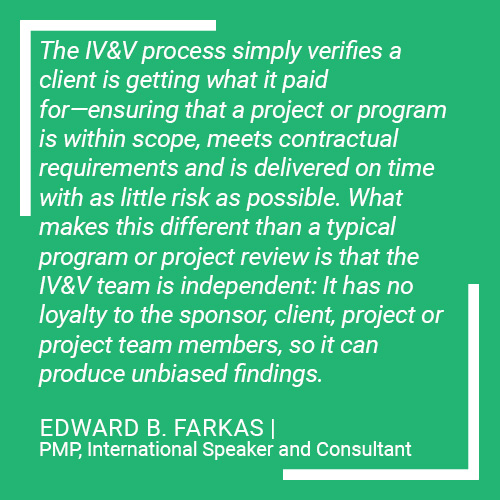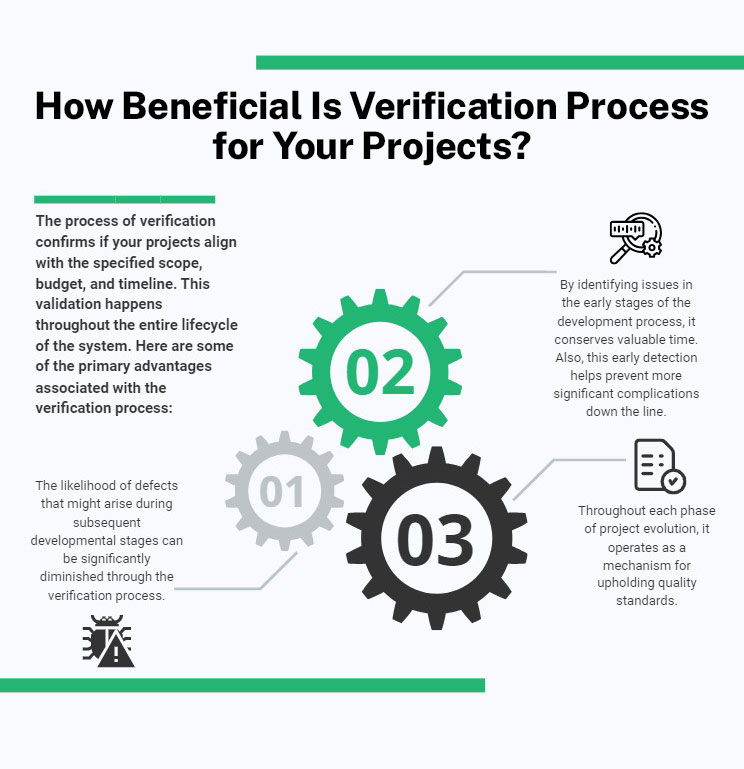
Project execution is not just about reaching the finish line; it is also about how precisely you have engineered your path to get there. This is where process verification plays a critical role. Imagine a cutting-edge race car, with its sleek form promising speed and power. Now, consider the meticulous process that ensures this engineering does not just look the part but performs flawlessly on the track. This is the essence of process verification in projects—the art of confirming that every piece of the puzzle fits perfectly and that each meticulously crafted component aligns with the vision. So, how does process verification help you identify the potential project threats and poor practices that prevent you from delivering an excellent product? This article outlines the impact of process verification on the final project outcomes, essential parameters, and how modern technology solutions such as predictive analytics help you increase process verification efficiency. The article also highlights how project execution and verification must function, and if yours falls short, identify how to improve it here.
What Does Process Verification Mean for Your Projects?

Process verification is a quality assurance practice that aims to ensure that your projects meet specific requirements, regulations, or specifications. It involves systematic and documented approaches to confirm that the processes used during project execution are consistent and result in the intended outcomes. This process serves as a crucial checkpoint to ensure that the implemented procedures and methods are in alignment with the desired outcome. Essentially, it verifies the accuracy, consistency, and reliability of the processes, contributing to the overall success of your project. Now, you wouldn't want a project without process verification. Would you?
Essential Generic Parameters of the Verification Process
Are you, as a project leader, inclined to view your development team's efforts positively, or do you tend to observe certain warning signs and inappropriate methodologies within your project? If the latter scenario resonates with your present situation, there is no need to despair just yet! Process verification helps you maintain the proper course of your projects. However, the verification process is anchored around six key parameters that lay the foundation for its execution. These include:
![]() Clarity: Clarity is a crucial factor, encompassing the lucidity of objectives, tasks, timelines, and processes. It is not about eliminating all the confusion—that's impossible. But it is about ensuring everyone knows the goals, the tasks, when things should be done, and how they should be done. This consistent endeavor against ambiguity is a pivotal driving force in maintaining high levels of team motivation and ultimately yielding positive outcomes.
Clarity: Clarity is a crucial factor, encompassing the lucidity of objectives, tasks, timelines, and processes. It is not about eliminating all the confusion—that's impossible. But it is about ensuring everyone knows the goals, the tasks, when things should be done, and how they should be done. This consistent endeavor against ambiguity is a pivotal driving force in maintaining high levels of team motivation and ultimately yielding positive outcomes.
![]() People: The significance of having the right individuals in appropriate roles cannot be overstated. Getting the right team for the right jobs is like halfway to success. Often, when projects fail to perform well, it is because of a mismatch between personnel and assignments, leading to underperformance.
People: The significance of having the right individuals in appropriate roles cannot be overstated. Getting the right team for the right jobs is like halfway to success. Often, when projects fail to perform well, it is because of a mismatch between personnel and assignments, leading to underperformance.
![]() Metrics: As quoted by management expert Peter Drucker, "If you can't measure it, you can't manage it." Numbers and statistics help you evaluate the progression of project execution. Therefore, carefully select your project metrics to enhance the overall execution process.
Metrics: As quoted by management expert Peter Drucker, "If you can't measure it, you can't manage it." Numbers and statistics help you evaluate the progression of project execution. Therefore, carefully select your project metrics to enhance the overall execution process.
![]() Tracking: Tracking is the action part of metrics. It is not just about collecting data; it is about using that data to fine-tune your game plan. Tracking provides the extra push to get things done the way they are intended.
Tracking: Tracking is the action part of metrics. It is not just about collecting data; it is about using that data to fine-tune your game plan. Tracking provides the extra push to get things done the way they are intended.
![]() Review: You want to trust that everyone is doing their best, but you must double-check. That is where reviews play a crucial role. Project reviews act as quality safeguards for each task, contributing collectively to the attainment of overarching quality objectives.
Review: You want to trust that everyone is doing their best, but you must double-check. That is where reviews play a crucial role. Project reviews act as quality safeguards for each task, contributing collectively to the attainment of overarching quality objectives.
![]() Closure: Do not forget closure. Functional verification is a perpetually ongoing process, requiring deliberate closure efforts to prevent indefinite continuation.
Closure: Do not forget closure. Functional verification is a perpetually ongoing process, requiring deliberate closure efforts to prevent indefinite continuation.
Who Is Responsible for Process Verification?
You know, there are various techniques to ensure the quality and reliability of a project through thorough checking. However, if you do not catch potential issues early, they might lead to project failures down the line. So, how can you save your projects from costly rework and unexpected delays? By leveraging comprehensive project solutions. Today, modern technology solutions, such as predictive analytics, offer continuous project oversight, allowing you to predict and address potential project problems before they escalate into failure. Besides the predictive analytics-enabled solutions, there are other verification methods to protect your projects from failure. Are you wondering what they are?
Peer Reviews
One of the simplest yet most valuable ways to verify projects is through peer reviews. This involves sharing your work with colleagues and getting their feedback. They look for mistakes or ways to improve the quality. This could cover anything from checking requirement documents to the software's design and actual code. Reviewers might even jot down their findings in a short report.
The best part, you ask? You do not need to invest a ton of resources, yet you can still achieve good results. It is efficient and effective. But remember, if your reviewers lack the necessary expertise, the results might not be so great.
Walk-Throughs
Walkthroughs offer a more formal and structured approach compared to peer reviews. Here, the person who created the document or software presents it to a small group, comprising 2-7 people. The author guides the meeting, introducing the content and addressing questions from the participants. This interactive approach helps identify potential faults and serves as a way to share knowledge. This method can help you identify potential problems and is a great way to share knowledge among team members.
But be cautious; sometimes the presenter might focus too much on certain parts and skip over critical areas.
Inspections
For a highly structured approach, there are inspections. These are the most formal types of reviews. An impartial moderator leads a team of 3-6 participants. Each member actively engages and follows specific guidelines. They openly discuss the content, pointing out issues and important points. Afterward, the moderators prepare a comprehensive report based on the discussion. These inspections are incredibly effective for finding problems in documents like requirement specifications or design documents. Critical inspections can pinpoint issues and refine documents, preventing faults from spreading through the software development cycle.
However, inspections do demand time, discipline, and a bit more investment. Skilled participants are needed too. When must process verification be conducted?

Tips for Effective Process Verification
Here are some key takeaways that can assist you in conducting successful verification testing:
- Initiate the process of checking and validating as soon as your projects begin. This early start facilitates the rapid identification and resolution of issues, mitigating the risk of extensive rework down the line.
- Set standards that are clear, rational, and aligned with the project's overarching objectives. Well-defined objectives are the foundation of effective testing.
- Throughout the verification and approval process, involve critical stakeholders. Their insights and viewpoints are valuable and contribute to a comprehensive consideration of all aspects.
- Identify high-risk areas and allocate more resources to thoroughly assess these sections to proactively identify and rectify potential problems.
- Construct test scenarios that closely simulate real-world conditions. Testing within a realistic context yields more accurate insights into the projects’ performance and behavior.
- Each process verification method carries its own advantages and limitations, and leveraging predictive analytic-enabled solutions enhances the comprehensiveness of the information gathered.
- Meticulously document all process verification activities, encompassing test plans, methodologies, outcomes, and observations. This repository of information serves as a reference for future iterations and facilitates tracking the evolution of the project.
- View process verification and validation as continuous activities. Derive lessons from each testing cycle, pinpoint necessary modifications, and implement these refinements in subsequent iterations. This iterative approach enhances the projects’ performances and overall reliability.
By incorporating these recommendations, you can elevate the effectiveness of your process verification and testing, resulting in heightened project performance and overall success.
The Way Forward
Process verification is a pivotal step in quality assurance, guaranteeing accurate project development in alignment with specified requirements. This multifaceted process encompasses vital phases like meticulous planning, precise specification, meticulous implementation, comprehensive testing, and detailed reporting. To attain effective process verification, you must employ diverse methods such as rigorous inspections, thorough reviews, exhaustive testing, in-depth analysis, and meticulous simulation. But modern-day solutions can significantly enhance project process verification. Curious about how? TrueProject, a predictive intelligence solution for project health and performance, serves as a preemptive measure, identifying potential project problems even before they escalate into critical failures. The platform can be your unbiased moderator, which can greatly enhance your project quality by promptly alerting management to projects requiring attention. With TrueProject, you can get a clear and concise answer to how your project is going, proactively manage risks, and, consequently, achieve successful project process verification.
This holistic approach underscores the indispensable role of technology in project execution, particularly in achieving meticulous process verification.
More information on TrueProject can be found at www.trueprojectinsight.com.
About the Author:
 Nivedita Gopalakrishna is a content marketing specialist within the TrueProject Marketing team with extensive experience in blog writing and website content creation across diverse industries. Nivedita’s proficiency in crafting engaging blog posts and informative website content is a testament to her years of experience. Beyond her prowess in written communication, Nivedita has the knack for creating visually appealing static graphics that have played a pivotal role in expanding TrueProject's marketing efforts. Through thoughtful design choices, she has helped convey the essence of the brand and captivate audiences effectively. Outside the professional sphere, Nivedita is a trained classical singer and a fitness enthusiast, embodying creativity and wellness in and out of the office.
Nivedita Gopalakrishna is a content marketing specialist within the TrueProject Marketing team with extensive experience in blog writing and website content creation across diverse industries. Nivedita’s proficiency in crafting engaging blog posts and informative website content is a testament to her years of experience. Beyond her prowess in written communication, Nivedita has the knack for creating visually appealing static graphics that have played a pivotal role in expanding TrueProject's marketing efforts. Through thoughtful design choices, she has helped convey the essence of the brand and captivate audiences effectively. Outside the professional sphere, Nivedita is a trained classical singer and a fitness enthusiast, embodying creativity and wellness in and out of the office.
Endnotes
- “Verification project management.” VerifSudha, (n.d.). https://www.verifsudha.com/2016/06/03/verification-project-management/
- Singh, Tarun. “Verification Methods in Software Verification.” GeeksforGeeks, July 28, 2023. https://www.geeksforgeeks.org/verification-methods-in-software-verification/
- Test Automation Insights. “The Purpose of Verification and Validation in Software Testing.” Ranorex, October 20, 2022. https://www.ranorex.com/blog/validation-in-software-testing/
- Nichols, Etienne. “Process Verification vs Process Validation: What’s the Difference?” Greenlight Guru, February 3, 2023. https://www.greenlight.guru/blog/process-validation-verification
- “Verification and Validation.” AcqNotes, (n.d.) https://acqnotes.com/acqnote/careerfields/verification-validation





